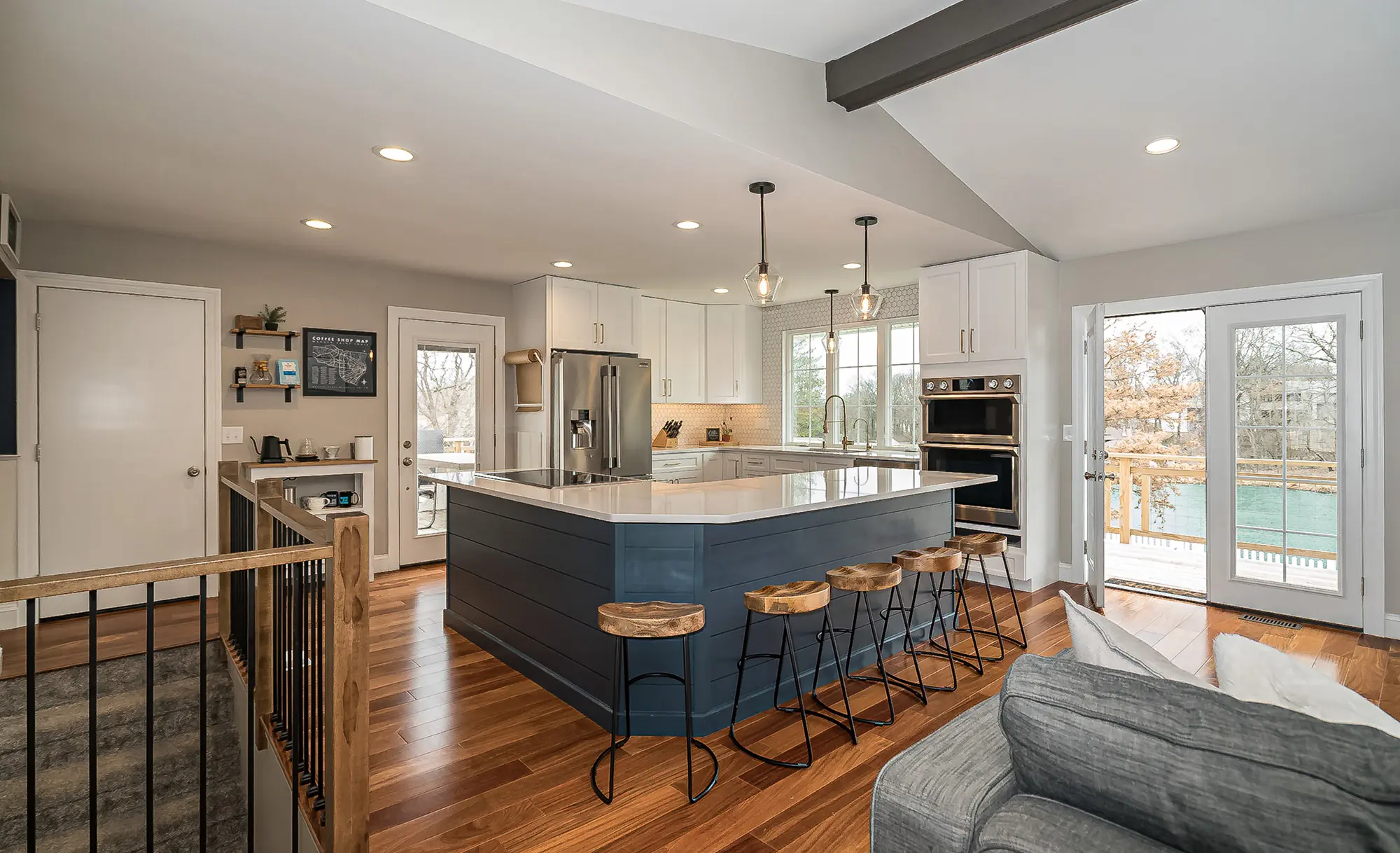
How to Go About a Full Home Renovation – A full home renovation is an exciting opportunity to breathe new life into your living space, improve functionality, and increase property value. However, the scope and complexity of such a project require thorough planning and execution. Here’s a comprehensive guide to help you navigate the process of a full home renovation effectively.
Step 1: Assess Your Needs and Objectives
Start by identifying the purpose of your renovation. Ask yourself:
- What do you want to achieve? (e.g., modernizing the design, improving energy efficiency, or adding more living space)
- Which areas of the house require the most attention?
Creating a clear vision of your goals will help you prioritize tasks and stay focused throughout the project.
Pro Tip: Conduct a walkthrough of your home to list areas that need repair, replacement, or upgrades.
Step 2: Set a Realistic Budget
Determine how much you’re willing to spend and break it down into categories such as materials, labor, permits, and unexpected costs. Research average renovation costs in your area and get estimates for:
- Structural changes (e.g., removing walls or adding extensions).
- New installations (e.g., HVAC systems, plumbing, and electrical work).
- Cosmetic updates (e.g., painting, flooring, and fixtures).
Include a contingency fund of 10-20% to account for unforeseen expenses.
Pro Tip: Track all expenses during the renovation to ensure you stay within budget.
Step 3: Create a Detailed Plan and Timeline
A full home renovation can take several months or even years, depending on the scope. Develop a step-by-step plan to organize the project:
- Prioritize essential repairs (e.g., roof, foundation, or plumbing issues).
- Plan renovations room by room to avoid overwhelming yourself.
- Establish a timeline for each phase of the project.
Consider hiring a project manager or using project management software to keep everything on track.
Step 4: Hire Qualified Professionals
Working with experienced contractors, architects, and designers ensures quality results. When choosing professionals:
- Check licenses, certifications, and insurance.
- Review portfolios and client testimonials.
- Obtain multiple quotes and detailed contracts.
Clear communication is crucial to ensure your vision is accurately implemented.
Step 5: Obtain Necessary Permits
Many renovations, such as structural changes or additions, require permits. Check local regulations and ensure all necessary approvals are in place before starting work. Failing to secure permits can result in fines or project delays.
Pro Tip: Your contractor may assist with obtaining permits, but always confirm compliance with local codes.
Step 6: Demolish and Prepare the Space
Demolition is the first step in the physical renovation process. Ensure proper preparation by:
- Removing furniture and personal items from renovation areas.
- Setting up temporary living spaces if necessary.
- Disposing of debris responsibly (consider renting a dumpster).
Safety is paramount during demolition, so use protective gear and follow guidelines.
Step 7: Focus on Structural and System Upgrades
Address essential systems before moving on to cosmetic updates:
- Repair or replace roofing, foundation, and insulation.
- Upgrade electrical wiring, plumbing, and HVAC systems.
- Ensure windows and doors are energy-efficient and secure.
Tackling these foundational elements first prevents complications later in the project.
Step 8: Work on Design and Aesthetic Features
Once the essential upgrades are complete, focus on design elements to personalize your space:
- Choose a cohesive color palette and materials.
- Install flooring, cabinetry, and countertops.
- Add lighting fixtures, hardware, and decorative elements.
Consult a designer if you need assistance creating a harmonious look.
Step 9: Incorporate Smart and Sustainable Features
Modernize your home by integrating technology and eco-friendly solutions:
- Install smart thermostats, security systems, and appliances.
- Use sustainable materials like bamboo flooring or recycled glass tiles.
- Opt for energy-efficient lighting and solar panels.
These features enhance functionality and reduce long-term utility costs.
Step 10: Final Inspections and Touch-Ups
Before considering the project complete, conduct a thorough inspection to ensure all work meets quality standards and codes. Address any minor issues or adjustments, such as:
- Fixing paint imperfections.
- Ensuring all fixtures are properly installed.
- Testing systems like plumbing and electrical.
Pro Tip: Create a punch list to document and resolve any remaining tasks.
Bonus Tips for a Successful Full Home Renovation
- Stay Flexible: Unexpected challenges are common in large renovations. Be prepared to adjust your plan as needed.
- Communicate Regularly: Keep open lines of communication with your contractors and team.
- Document Progress: Take photos and notes to track the transformation of your home.
Conclusion
A full home renovation is a significant undertaking, but with careful planning and execution, it can yield incredible results. By setting clear goals, creating a detailed plan, and working with skilled professionals, you can transform your house into your dream home. Remember, patience and preparation are key to navigating this rewarding process successfully.

